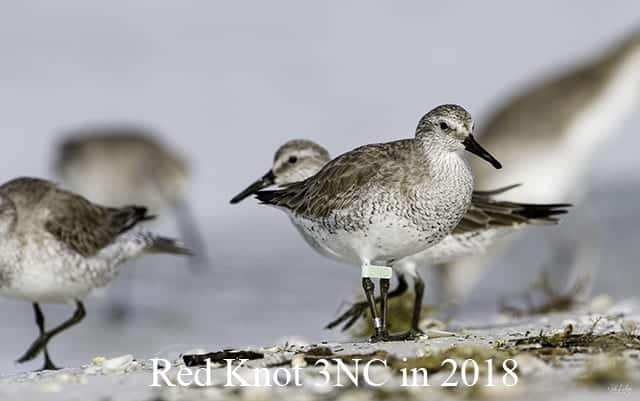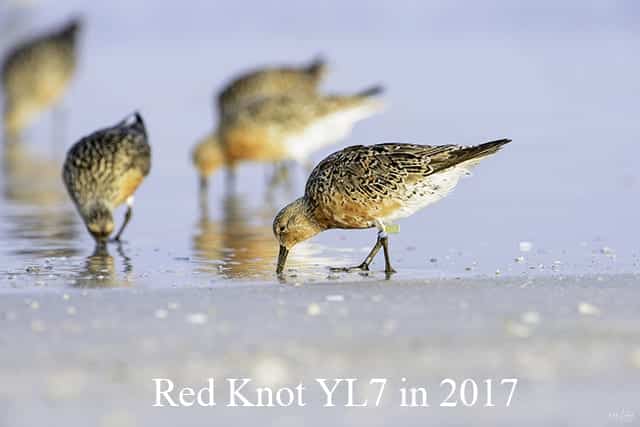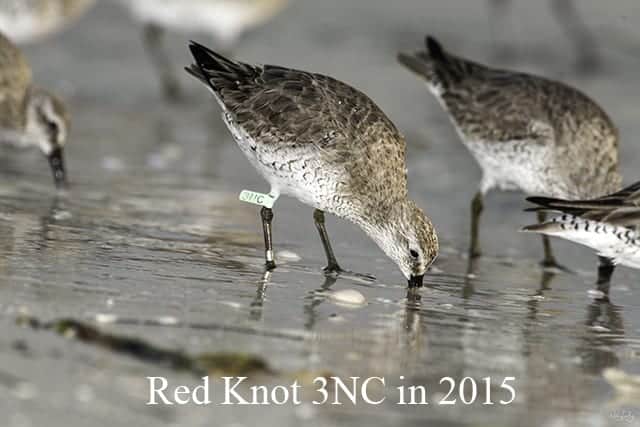
One of the joys of being a nature and wildlife photographer are the interesting things I learn. Not just about photography, but about the birds and animals I encounter.
Take for example 3NC. Okay, I know you are asking; who or what is 3NC? Well, 3NC is the identification code assigned to a Red Knot, a large member of the Sandpiper family. The code is found on a light green plastic tag affixed to this Red Knot’s upper right leg above a silver metal federal identification band.
I first met 3NC on a beach at Honeymoon Island State Park in Dunedin, Florida in late December of 2015. He or she was feeding along the shoreline amid a small group of Red Knots. Fast forward slightly over three years later to the February of 2018 in Fort DeSoto County Park, just south of St. Petersburg, Florida. While photographing a flock of Red Knots who should I spy through the lens? None other than 3NC.

Finding 3NC again got me thinking about where he/she had been in the three years since our first encounter on that beach in Florida. Through a bit of research, I discovered between being banded in 2010 on Anna Maria Island in Florida and late 2018, 3NC had been spotted 36 times from beaches in Florida to the coastlines of Georgia and Delaware. Who knows where else this bird has been?
Yet 3NC is not the longest travelled Red Knot I have encountered. In the spring of 2017, I was fortunate enough to encounter a group of 300-plus Red Knots feeding on the beaches at Fort Desoto. Among the birds I photographed were 11 banded Red Knots, each with a different story to tell. First banded in 2015 in Grande Isle, Louisiana, A63 was observed in Massachusetts, Quebec Province and Florida up to January of 2019. YL7, captured and banded at Fort DeSoto in 2008, was spotted in Tierra Del Fuego at the southern tip of Chile in February 2011!
Twice a year Red Knots undertake a 9,300-mile migration from South America to their breeding grounds in the Canadian Arctic and back. They can be considered among the champions when it comes to long distance bird migration.
If you ever spot a banded shorebird and can record the code on the flag attached to the bird’s leg, there is a way to find out where it was banded and where it has been seen. Other shorebirds also have colored bands attached to one or both legs to identify them. Visit bandedbirds.org and click on the “Report Sightings” button to start the process. You are likely to be astounded at what you might discover about shorebird migration.
Should you be in the mood for a good read about bird migration, I highly recommend Songbird Journeys: Four Seasons In The Lives of Migratory Birds. The book is written by Miyoko Chu, Senior Director of Communications and an ornithologist at the Cornell Lab of Ornithology. It provides great insights into the challenges of bird migration.
And in case you are wondering I have yet to find 3NC, A63, or YL7 this spring. I hope they are still out there somewhere, riding on the wind or feeding on a beach.

